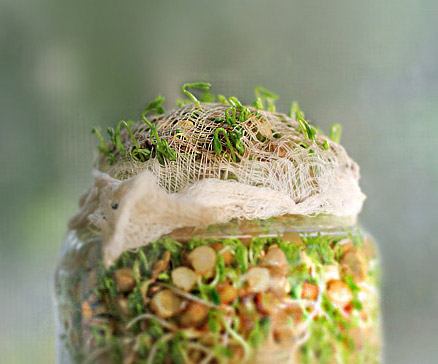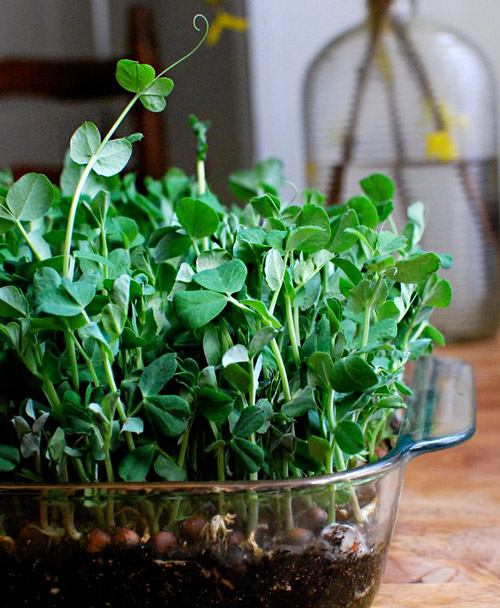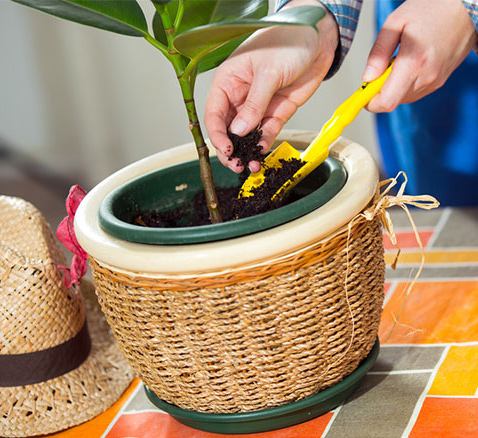In the previous article , I tried to describe all the benefits of sprouting seeds at home. Sprouts can be considered an alternative to microgreens . Sprouting seeds, beans, and grains is very easy. When you have sprouts at home, any sandwich or salad gets a makeover. A portion of simple boiled rice becomes a culinary masterpiece with a spoonful of sesame oil, some garlic, and a handful of lentil or soy sprouts. A buttered sandwich sprinkled with flax sprouts and sea salt will surprise you. So, how is it done?
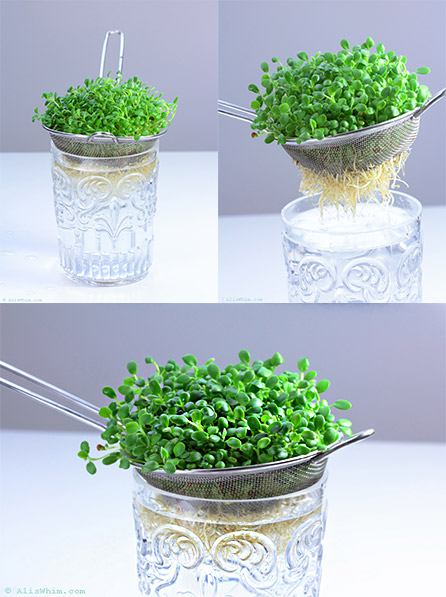 The simplest method is sprouting seeds above a container of water. Seeds soaked for several hours are rinsed, placed on a sieve, and covered with gauze. Rinse the seeds twice a day, and when they develop roots into the water, change the water daily. This method is suitable for small seeds like radish, cabbage, arugula, and watercress.
The simplest method is sprouting seeds above a container of water. Seeds soaked for several hours are rinsed, placed on a sieve, and covered with gauze. Rinse the seeds twice a day, and when they develop roots into the water, change the water daily. This method is suitable for small seeds like radish, cabbage, arugula, and watercress.
What Do You Need for Sprouting?
- A jar with a wide mouth
- Gauze and a rubber band
- Seeds, nuts, beans…
How to Sprout Seeds, Beans, and Grains?
- First of all, buy seeds for sprouting. These can be beans of any kind, soybeans, amaranth, buckwheat, barley, chickpeas, rye, oats (oat sprouts are slightly bitter), wheat, lentils, flax, sunflower, and many others—whatever your heart desires and you can find.
- Sort the seeds—remove debris, husks, damaged, and crushed grains.
- Sprout only one type of seed in a single jar. A liter jar can accommodate no more than one cup of seeds.
- Rinse the grains under running water as thoroughly and gently as possible. It’s best to sterilize the jar beforehand.
- Soak the grains in water overnight (at least 6 hours). It’s better to use filtered, boiled, or spring water. The beans (grains, seeds) will swell and awaken.
- Drain the water after 6–12 hours, rinse thoroughly and gently. The water should drain well from the grains. You can cover the jar with gauze, secure it with a rubber band, and place the jar at an angle to allow excess water to drain.
- Keep the jar away from direct sunlight and in a shaded area. Some sprouts, like soybean, need to grow exclusively in darkness. Unfortunately, I haven’t found other examples besides soybeans, but you can experiment with other beans—darkness vs. light.
- Rinse the seeds twice a day. Ensure that excess moisture drains well.
- Each seed, nut, or bean has its own individual sprouting time ( soaking and sprouting chart ). You will see for yourself when they are ready to eat based on the sprouts. Store the sprouts in the refrigerator in a sealed container—rinsed and dried. You can remove the seed and skin, but it’s better to eat them together.
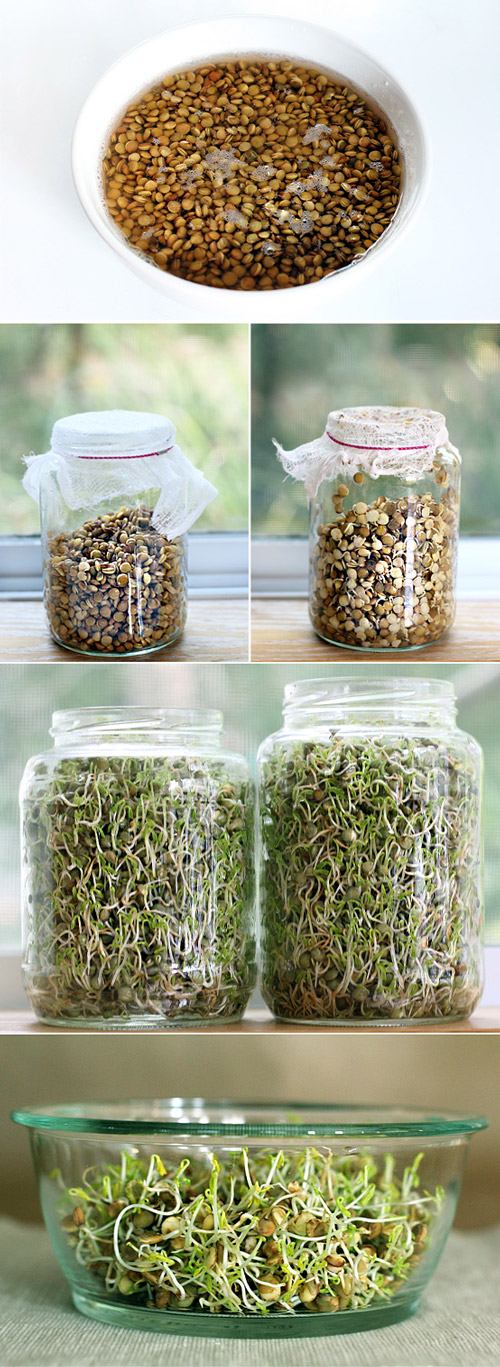 Так проращивается чечевица (не колотая) are sprouted.
Так проращивается чечевица (не колотая) are sprouted.
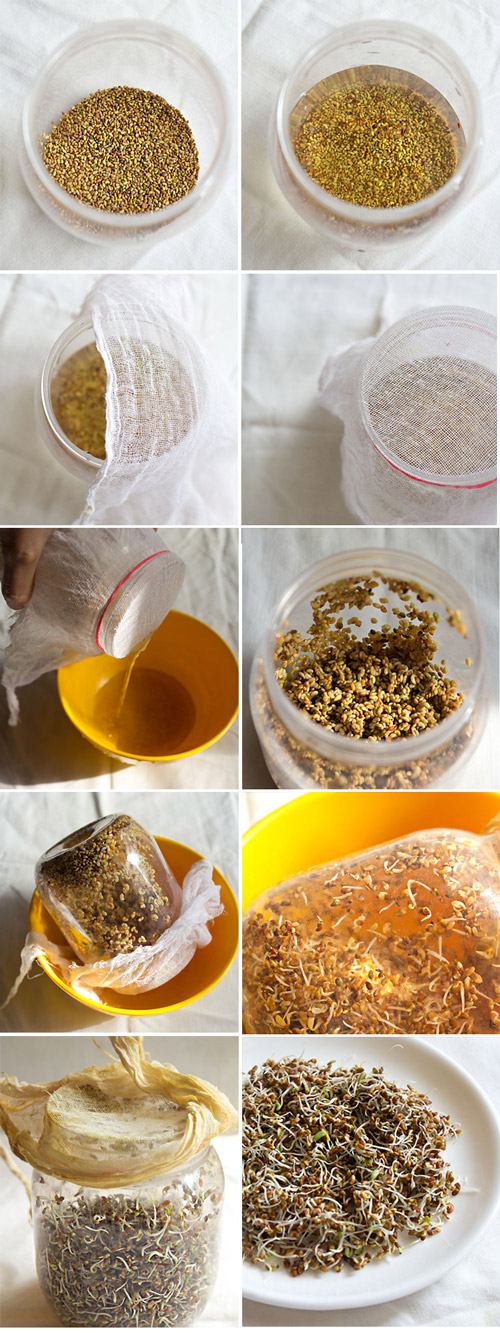 This is how alfalfa and most grains and beans are sprouted.
This is how alfalfa and most grains and beans are sprouted.
Soybean Sprouts
I noticed that the rules for sprouting soybeans differ slightly from the standard ones. Here is a detailed video about growing soybean sprouts:
Add sprouts everywhere and anywhere. If you choose to sprout buckwheat, you can eat it as a side dish just as you would cooked buckwheat. In fact, this applies to any grains and cereals.
Maybe I should write a few delicious recipes with sprouts in the next article. If you eat sprouts daily, about 100 grams, you might not even need to think about additional sources of magnesium and B vitamins. Eat deliciously and stay healthy!

